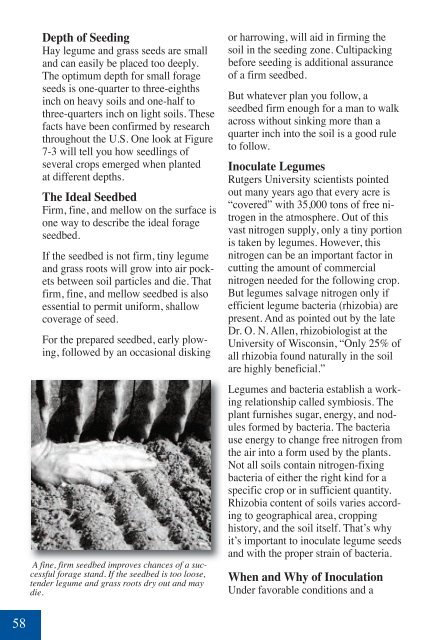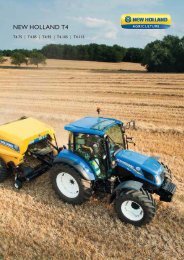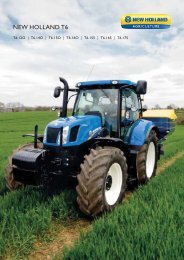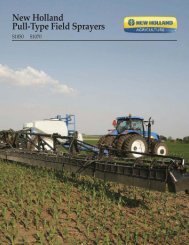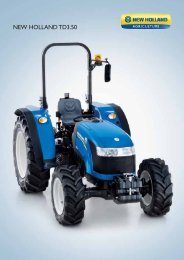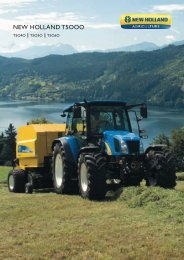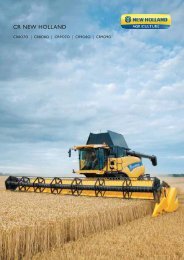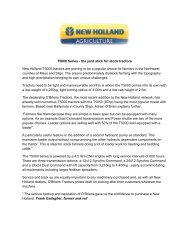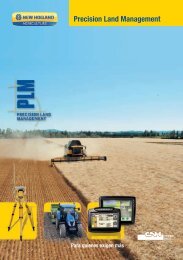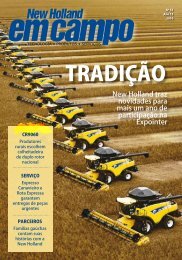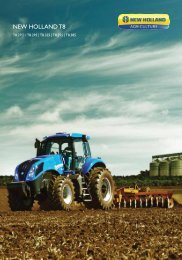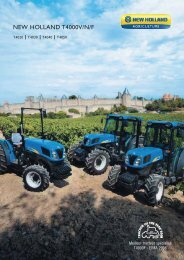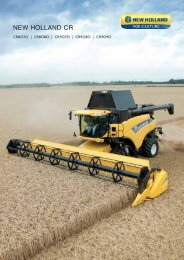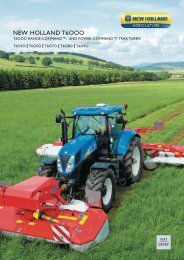You also want an ePaper? Increase the reach of your titles
YUMPU automatically turns print PDFs into web optimized ePapers that Google loves.
58<br />
Depth of Seeding<br />
Hay legume and grass seeds are small<br />
and can easily be placed too deeply.<br />
The optimum depth for small forage<br />
seeds is one-quarter to three-eighths<br />
inch on heavy soils and one-half to<br />
three-quarters inch on light soils. These<br />
facts have been confirmed by research<br />
throughout the U.S. One look at Figure<br />
7-3 will tell you how seedlings of<br />
several crops emerged when planted<br />
at different depths.<br />
The Ideal Seedbed<br />
Firm, fine, and mellow on the surface is<br />
one way to describe the ideal forage<br />
seedbed.<br />
If the seedbed is not firm, tiny legume<br />
and grass roots will grow into air pockets<br />
between soil particles and die. That<br />
firm, fine, and mellow seedbed is also<br />
essential to permit uniform, shallow<br />
coverage of seed.<br />
For the prepared seedbed, early plowing,<br />
followed by an occasional disking<br />
A fine, firm seedbed improves chances of a successful<br />
forage stand. If the seedbed is too loose,<br />
tender legume and grass roots dry out and may<br />
die.<br />
or harrowing, will aid in firming the<br />
soil in the seeding zone. Cultipacking<br />
before seeding is additional assurance<br />
of a firm seedbed.<br />
But whatever plan you follow, a<br />
seedbed firm enough for a man to walk<br />
across without sinking more than a<br />
quarter inch into the soil is a good rule<br />
to follow.<br />
Inoculate Legumes<br />
Rutgers University scientists pointed<br />
out many years ago that every acre is<br />
“covered” with 35,000 tons of free nitrogen<br />
in the atmosphere. Out of this<br />
vast nitrogen supply, only a tiny portion<br />
is taken by legumes. However, this<br />
nitrogen can be an important factor in<br />
cutting the amount of commercial<br />
nitrogen needed for the following crop.<br />
But legumes salvage nitrogen only if<br />
efficient legume bacteria (rhizobia) are<br />
present. And as pointed out by the late<br />
Dr. O. N. Allen, rhizobiologist at the<br />
University of Wisconsin, “Only 25% of<br />
all rhizobia found naturally in the soil<br />
are highly beneficial.”<br />
Legumes and bacteria establish a working<br />
relationship called symbiosis. The<br />
plant furnishes sugar, energy, and nodules<br />
formed by bacteria. The bacteria<br />
use energy to change free nitrogen from<br />
the air into a form used by the plants.<br />
Not all soils contain nitrogen-fixing<br />
bacteria of either the right kind for a<br />
specific crop or in sufficient quantity.<br />
Rhizobia content of soils varies according<br />
to geographical area, cropping<br />
history, and the soil itself. That’s why<br />
it’s important to inoculate legume seeds<br />
and with the proper strain of bacteria.<br />
When and Why of Inoculation<br />
Under favorable conditions and a


